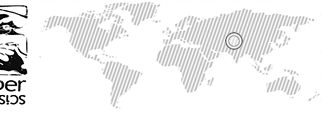The instruments were ancient, the music was old and new, and the presentation was subtly high-tech in "Music From Central Asia," a triple bill of ensembles from Kyrgyzstan, Afghanistan and Tajikistan on Tuesday night at the Miller Theater. The concert was part of a project sponsored by the Aga Khan Music Initiative, along with releases of albums by all three groups (and more to come), seeking to open Western ears to Central Asian music.
Introductory videos mixed magnificent landscapes with musicians' interviews. As the groups performed, the screen translated the song lyrics, from historical epics to mystical love songs.
All three groups were self-conscious traditionalists, mixing discreet innovations with long musical legacies. There were no microphones between musicians and audience, but the music was gently amplified to bring out sonic nuances: the eerie harmonics of a Kyrgyz jew's harp, the sympathetic strings of an Afghan rubab (plucked lute), the percussive strumming of a two-stringed Tajik dutar.
Musically and sartorially, the Kyrgyz ensemble Tengir-Too was the concert's peak. The members wore elaborately embroidered robes with three-cornered stovepipe hats for the men and feather-tufted caps for the women. Their music — rooted in the songs of mountain nomads but also reflecting a Europeanizing Soviet culture during the 20th century — had a folky, jaunty drive.
Gruff recitations of historical epics gave way to hearty songs — including a lament about the beneficence of Attila Khan, known here as Attila the Hun — backed by the rhythmic strumming of a komuz, a three-stringed, pear-shaped lute.
Traditional nomad music tends to be for soloists, but the most striking piece was one composed by Tengir-Too's founder and director, Nurlanbek Nyshanov, for a trio of jew's-harps. Their twangy drone was the backdrop for three different timbres of overtones, interwoven in European-style counterpoint.
Homayun Sakhi, on Afghan rubab, and Tayalai Hashimi, on tabla drums, are Afghans now living in California. Mr. Sakhi has personalized the rubab tradition by sometimes plucking its sympathetic strings (previously left to resonate untouched) and picking with both up- and down-strokes. One slow-building piece was a raga in Afghan style, using the darker sonority and Persian-tinged inflections of the rubab. The other was the vigorous "Kataghani" from northern Afghanistan: rubab and tabla in a high-speed chase.
Academy of Maqam, from Tajikistan, is a conservatory dedicated to Tajik traditions, including the classical style called shashmaqam: suites of songs rooted in modal melodies, Persian poetry and Sufi spirituality. The school's director, Abduvali Abdurasdikov, led a group of students in stark, somber songs of mystical love — just a drone and an impassioned solo voice — and earthier, more rhythmic group songs, complete with a twirling dancer. The musical modes were Central Asian. The lovers' laments, translated on the video screen, were universal.


